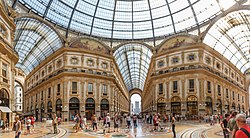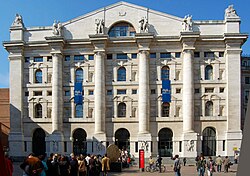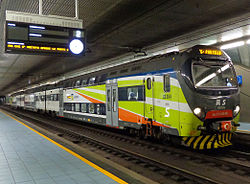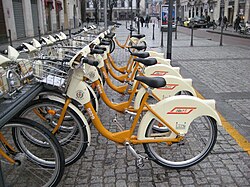The following outline is provided as an overview of and topical guide to Milan:
Contents
- General reference
- Geography of Milan
- Location of Milan
- Environment of Milan
- Landforms of Milan
- Areas of Milan
- Locations in Milan
- Demographics of Milan
- Government and politics of Milan
- History of Milan
- History of Milan, by period
- History of Milan, by subject
- Culture in Milan
- Art in Milan
- Events and traditions in Milan
- Religion in Milan
- Sports in Milan
- Economy and infrastructure of Milan
- Transportation in Milan
- Education in Milan
- Healthcare in Milan
- See also
- References
- External links
Milan – capital of Lombardy and the second most populous city in Italy after Rome. Milan is considered a leading Alpha Global City, [1] with strengths in the arts, commerce, design, education, entertainment, fashion, finance, healthcare, media, services, research, and tourism. The city has long been named a fashion capital of the world and a world's design capital, [2] thanks to several international events and fairs, including Milan Fashion Week and the Milan Furniture Fair, which are currently among the world's biggest in terms of revenue, visitors and growth. [3] [4] [5] Milan is the destination of 8 million overseas visitors every year, attracted by its museums and art galleries that boast some of the most important collections in the world, including major works by Leonardo da Vinci.










































